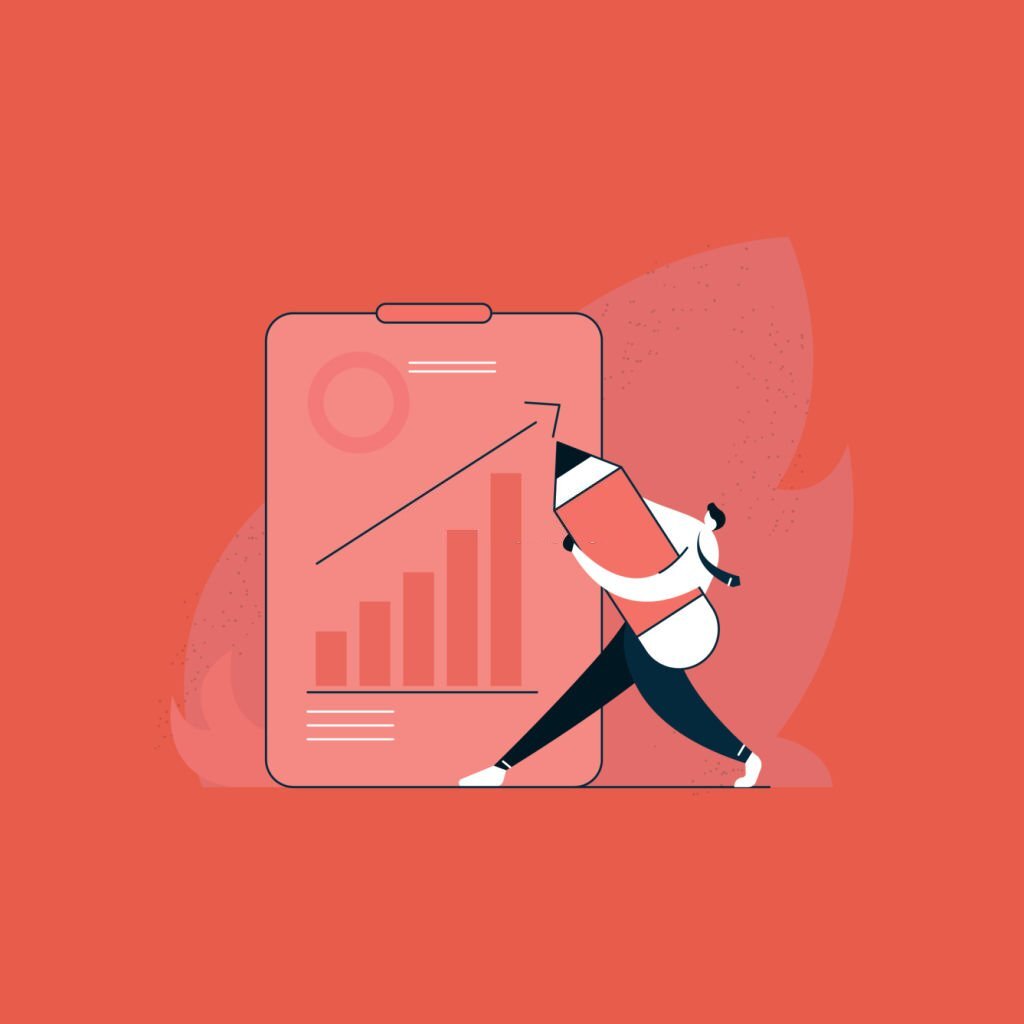You are a FISHERMAN now (Just for the time being). What do you do as a Fisherman? Cast a wider net, narrow the focus, and catch the fish(es).
How is it related to the topic I searched? It is.
Casting a wider net – Catching the attention of potential customers to your brand.
Narrowing the net – Focusing and filtering the customers who are the right fit.
Fish(es) in the net – A smaller yet qualified group of leads, potential enough to convert to customers.
The timeline of Fishing can be minutes to hours. But the timeline of your marketing funnel isn’t. Nurturing your potential customers, turning them into qualified leads, and making them take action is a long process.
This process is a marketing funnel, and how you bring them to the bottom of the funnel is where the drill is.
Influencer Marketing Funnel
The influencer marketing funnel is a framework to help a brand plan and execute influencer marketing campaigns effectively. Brands can reach a wider audience and provide social proof by endorsing trusted influencers.
The funnel comprises different stages reflecting the buyer’s journey and the objectives of influencer marketing.
Awareness / Top of the Funnel (TOFU): Increase brand awareness and reach a wider audience.
Consideration / Middle of the Funnel (MOFU): Educate the audience about the brand’s products or services and get them to consider its offerings.
Conversion / Bottom of the Funnel (BOFU): Convert audience into customers and drive sales.
Retention / Loyalty: Retaining existing customers and building loyalty.
Referral / Advocacy: Encourage existing customers to refer others to the brand and become advocates.
*The fishing example doesn’t serve well here in the retention and referral stages of the influencer marketing funnel. However, the example was cited to give a heads-up about the marketing funnel.
Awareness Stage | Top of the Funnel
Objective
Generate interest and build brand awareness among your target audience.
TOFU, the user wants information and answers. Their mindset is to get answers, “I have a problem, and I’m looking for possible solutions.”
“Awareness stage = Demand generation”
Metrics to Measure
- Audience activity
- Engagement
- Impressions
- Reach
- Brand mentions
- Website visits
- Email lists
Buyer Persona Understanding
Consumers of this stage are at the beginning of their buyer’s journey. Meaning to say they have just become aware of your brand. There’s no prior knowledge about what the brand offers; hence they are hesitant to make a purchase.
Mindset of Consumers
- Curious and open-minded to learn about the product or service
- Cautious about spending money
- Takes time to research the brand
- Not convinced enough to decide that the brand is the right fit for them
- Skeptical because of marketing messages and may prefer to hear from a trusted source like family, friends, influencers, or industry experts
Consumers’ need in this stage typically revolves around information and education.
They want to learn about the features and benefits of the product or service and understand how it can solve their problems or meet their needs.
Best Influencer Marketing Strategies for Awareness Stage
To effectively target buyer personas in the Awareness Stage, brands must focus on education and gaining their trust. This can involve creating content that informs and educates the audience.
- Unboxing videos
- Branded hashtag campaigns
- Blog posts
- Infographics
- Product reviews
- Contests and Giveaways
“Remember that impulsive buyers do some research before buying any product. Providing information about your brand and making the content easily accessible to educate your target audience is vital.”
Type of Influencers to Collaborate
When finding influencers for the Awareness Stage, it’s essential to look for influencers with an engaged following in the target audience. Influencers should have a high level of influence in the industry or niche and be able to create content that resonates with the audience.
In particular, nano and micro-influencers can be effective for the Awareness Stage because:
- More niche following
- Higher level of engagement
- Increase the reach and impact of the campaign
- Build trust with the audience
- Cost-effective, even small businesses can afford
Brands can also opt to partner with mega influencers because:
- They have a large following
- Immediate spike in brand awareness
- A possible increase in social media accounts follows
The Awareness / Top of the funnel goal is brand awareness. Hence collaborating with influencers who have high engagement and huge following accounts works.
However, brands can decide between micro & nano influencers and mega influencers based on their marketing budget.
Hypothetically speaking, the cost of working with one mega influencer equals 5 to 10 nano and micro-influencers.
Consideration Stage | Middle of the Funnel
Objective
The ultimate goal of the consideration stage is to make the potential customers consider the brand offerings.
MOFU represents a smaller and more qualified slice of your initial audience. They are narrowed down from the TOFU as qualified leads.
“Consideration stage = Lead generation”
Metrics to Measure
- Engagement ratio
- Like to comments ratio
- Website traffic
- Organic reach
- Social media follows
- Newsletter subscribers
- Qualified leads
- Contact information of leads
Buyer Persona Understanding
After all the research and trying to know what the brand has to offer, the buyer persona of this stage needs more nurturing and engagement to consider your brand. Because your brand is one of the options, their decision entirely depends on how much your brand constantly nurtures them.
Mindset of Consumers
- Worried about choosing a solution that won’t meet their needs
- Constantly compares the complexity and cost of the product or service
- Listing the pros and cons of every option they have researched
- Expecting some value that differentiates one brand from others
- Needs reassurance to confirm their buying decision
To clear their skeptical cloud, consumers want to see social proof, such as customer reviews or case studies, to verify the brand’s claims. Nurture, engage, and provide content that helps them decide they’ve made the right decision.
Best Influencer Marketing Strategies
After successfully driving consumers from the top of the funnel and educating them about your brands, it’s time to start engaging with them.
Every content strategy you prepare for the campaign with influencers must be engaging enough that consumers find it convincing to explore more about the brand.
- How-to-videos
- Behind the scenes
- Social media guides comprising all how-to-videos and posts
- In-depth blogs
- Newsletter
- Content featuring benefits
- Case studies
Type of Influencers to Collaborate
Engagement is all about this stage. Hence finding influencers with a high engagement rate is necessary.
Engagement is crucial; hence, nano and micro-influencers are known for their higher engagement.
Even macro and mid-tier influencers are known for higher engagement rates.
Your marketing budget again plays an unavoidable role here. You can decide whether to work with one or two macro influencers and make them your campaign ambassadors or collaborate with multiple nano and micro-influencers to drive virality.
When considering working with one or two influencers, ensure that the influencer’s interests and beliefs match your brand values. Research well and find influencers who have not worked with your competitors.
Driving engagement with zero effort to gain the trust of your target audience brings no leads to the bottom of the funnel.
Conversion Stage | Bottom of the Funnel
Objective
Consumers in BOFU are highly qualified leads. They intend to buy the product. Intentions are product-specific searches and review types to buy the product.
“Conversion stage = Sales generation.”
Metrics to Measure
- ROI via UTM links and discount codes
- Post campaign conversions
- Ebook downloads
- Email open and download rates
- Lead to customer conversion rate
- CPE / cost per engagement
- CPV / cost per view
- Signups
Buyer Persona Understanding
The final stage of the buyer journey depends entirely on the reassurance your brand has to offer. The consumer is at this stage because they want the product and are waiting for reassurance to support their decision.
Mindset of Consumers
- Needs transparent information from price, features, to benefits
- Hesitant to commit to a purchase
- Comparing different options (competitor brands)
- Looking to engage with a brand to fetch more information about a product or service
- Looking to negotiate the price or expecting promotions/discounts
- Considering the brand’s reputation and product quality
Best Influencer Marketing Strategies
Since consumers at the bottom of the funnel need reassurance, encouraging user-generated content from influencers is a better move. When driving the leads to conversions, your brand’s marketing strategies should revolve around providing them with something convincing to take action.
- Product reviews
- Testimonials
- Promotions or discount codes
- Exclusive free trial offers
- RSVPs to access the new products
- FAQs in websites and guides readily accessible on the social media platforms
Type of Influencers to Collaborate
The customer invests money in this stage. Hence the trust factor in them needs to be nurtured. And influencers with a better trust factor built up already are the right ones.
Micro and Nano influencers are known for the level of trust they have with their followers. Given that most of their follower count begins from their closest circle.
Mega influencers might work when they act as brand ambassadors. But constantly working with multiple brands and promoting every brand they come across does not look good in the eyes of the consumers. Hence the chances of conversion might take a hit.
Retention Stage
Objective
Retaining and nurturing the relationship with the customers is the primary post-purchase goal. Your brand’s product doesn’t deserve a one-time purchase; collaborating with influencers to retain customers helps create your brand’s loyal community.
“Retention stage = Building relationship”
Metrics
- Engagement in the post-conversion campaign
- Second-time purchases
- Loyalty program sign-ups
- Reward points redemption
Buyer Persona Understanding
Post-conversion, the buyer persona’s mindset is subjective, entirely depending on your brand’s product or service. However, if your customers had a positive experience, then prefer your brand for a second purchase or suggesting the products to their family and friends is possible.
Best Influencer Marketing Strategies for Retention Stage
- Product tutorials
- How to take care of the product
- Targeted responses to feedback
- Asking for pictures or videos from a customer using the brand’s product
- Posting user-generated content on the brand’s social media
- Loyalty programs
As discussed, your marketing funnel doesn’t end with BOFU.
Post-conversion consumers need nurturing to turn them into loyal customers.
When you start creating content that involves your converted customers, that’s the word of mouth marketing. Eventually, this effort drives newer audiences to your top of the funnel.
Finding Influencers for the Retention Stage
You have patterned with influencers to drive leads to your customers. Post-conversion, you can continue partnering with the same influencers and run campaigns explaining the product benefits or how-to guides.
Let’s say you partnered with an influencer for a new product launch, such as an A-line dress. Now with the same influencer, you can run a campaign showcasing how to style the dress.
- One influencer can post how to style the dress for a brunch, dinner date, or as an office wear
- While other influencers can post GRWM posts featuring your brand’s dress with a hashtag saying #wearingmyfavoritedress
While this content helps drive unexposed potential customers to the top of the funnel, your converted customers will get inspired by the styling videos.
Referral Stage
Objectives
Making your customers the brand evangelist is the goal of the referral stage. This stage helps attain the higher lifetime value of your current customers while acquiring a new customer base at a very low customer acquisition cost.
“Referral stage = Expanding Your Customer Base”
Metrics
- Positive reviews
- User-generated content
- Earned media
- Referral traffic
Buyer Persona Understanding
Customers in the referral stage are typically satisfied and have a positive attitude towards your brand. In the referral stage, customers are value-oriented, and you can expect word-of-marketing and turning into your brand advocates.
Best Influencer Marketing Strategies for Referral Stage
The referral stage revolves around providing your current influencers with the following:
- Referral links
- Discount codes
- Promotions
Influencers can post content that says limited-time discount codes. Or your brand can announce gifts for new customers using discount codes of certain influencers.
Finding Influencers for the Referral Stage
There’s no specific type of influencers you need to search for at the referral stage. Work with your current influencers with the marketing strategies mentioned above.
While you can take a step ahead and provide the same discounts to your customers and turn them into your micro/nano influencers.
Conclusion
Being the fisherman in the influencer marketing funnel is a long process, but it’s worth your time and effort. While you focus on customers at every stage, don’t blindly follow the blog-mentioned strategies. Your brand’s essence helps you stand out from the competitors. Know what works best for your brand while spending your time strategizing for customers at every stage. You cannot treat them all as ONE.



